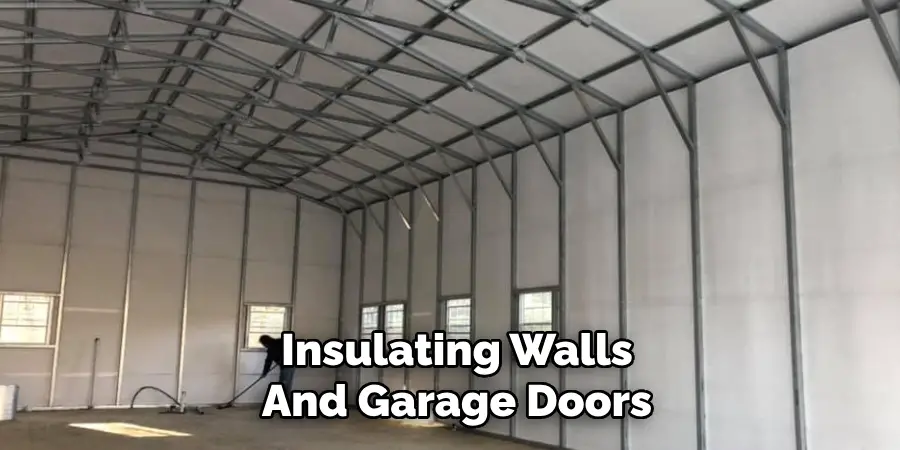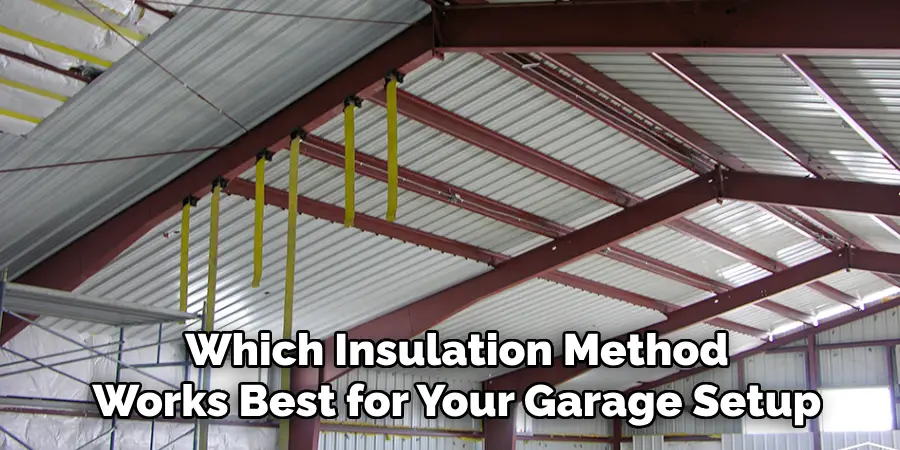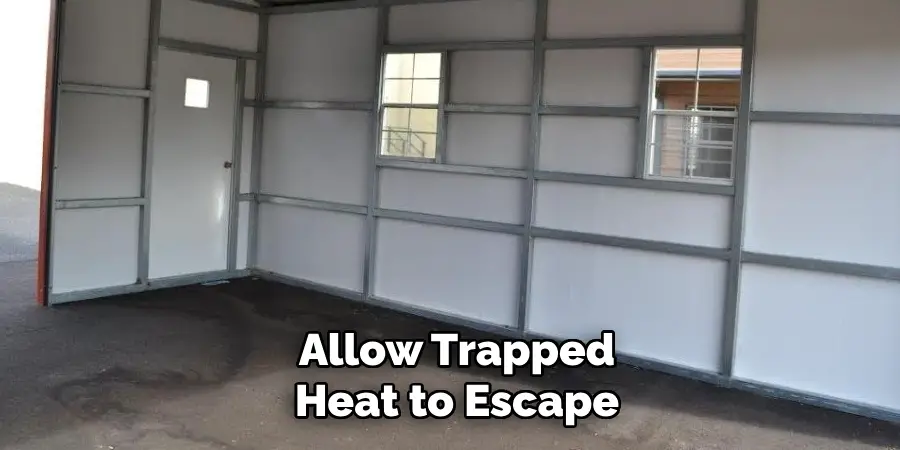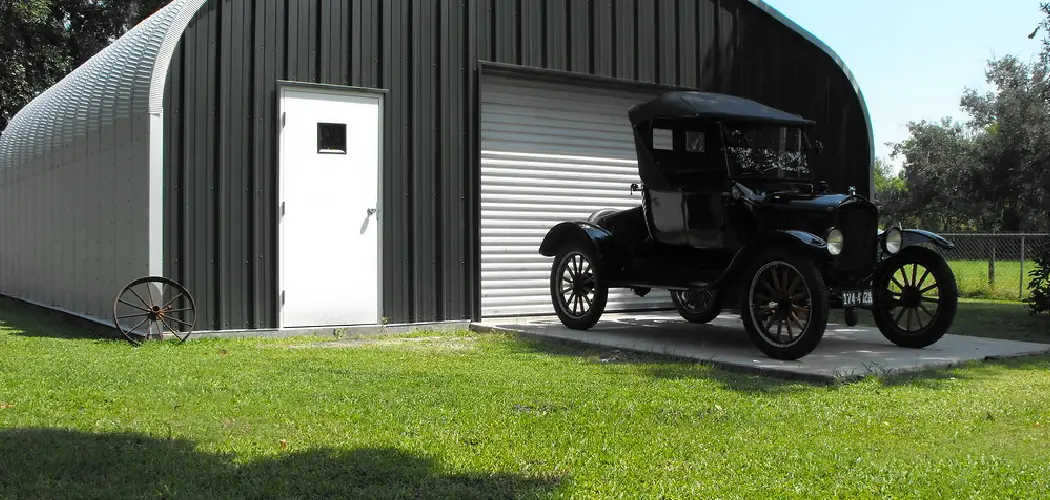Insulating a metal garage is an essential step toward creating an energy-efficient, moisture-resistant space, and comfortable in any season. Metal structures, while durable, pose specific challenges, such as high heat conduction, condensation buildup, and noise amplification. Without proper insulation, these issues can lead to temperature fluctuations, dampness, and a less functional space overall.

This article will guide you through understanding how to insulate metal garage environments effectively. It will cover the various types of insulation materials, their specific benefits, and the installation process. Additionally, you’ll find practical tips to ensure long-lasting results and avoid common pitfalls. Whether you’re looking to DIY or explore professional solutions, this guide will help you transform your metal garage into a versatile and comfortable space.
Benefits of Insulating a Metal Garage
Properly insulating a metal garage provides numerous advantages, making it a more functional and comfortable space. Below are some of the key benefits:
Temperature Regulation
Insulation helps maintain a stable temperature inside the garage, keeping it warmer during the winter months and cooler during the summer. This is especially beneficial if the garage is used as a workspace, storage area, or even an additional living space, as it ensures comfort throughout the year.
Moisture and Condensation Control
Metal garages are prone to condensation due to changes in temperature and humidity levels, which can lead to rust, corrosion, and mold over time. Insulation acts as a barrier, reducing moisture buildup and protecting your tools, vehicles, and other stored items from potential damage.
Energy Efficiency
Insulation significantly reduces energy waste by minimizing heat transfer if your metal garage is climate-controlled with heating or cooling systems. This leads to lower energy bills, a smaller environmental footprint, and a more sustainable approach to maintaining the garage’s temperature.
Noise Reduction
Insulation also dampens sound, reducing noise from outside sources such as traffic, rain, or windy conditions. This makes the garage a quieter and more serene space, ideal for focus-driven activities or relaxation.
How to Insulate Metal Garage: Choosing the Right Insulation Material
Selecting the appropriate insulation material for your garage is crucial for achieving optimal energy efficiency and comfort. Different materials offer varied benefits and are suited to specific needs and conditions. Below, we explore some popular options to help you decide.
Batt and Roll Insulation (Fiberglass)
Pros: This is an affordable and widely available option, making it one of the most common choices for garage insulation. Fiberglass batts are easy to handle and suitable for walls and ceilings.
Cons: Fiberglass insulation often requires a vapor barrier to prevent moisture buildup, which can lead to mold. Additionally, working with metal framing can be challenging due to the material’s flexibility.
Foam Board Insulation
Pros: Foam board insulation delivers a high R-value per inch, making it highly effective at reducing heat transfer. It is easy to cut and fit, providing an excellent solution for insulating walls and garage doors.

Best For: Foam board is ideal when you need a space-efficient material that maximizes thermal performance in a small area.
Spray Foam Insulation
Pros: Spray foam excels at air-sealing, filling even the tiniest gaps or cracks to prevent air leakage. It is also moisture-resistant, making it ideal for areas prone to humidity.
Cons: This option tends to be expensive and often requires professional installation for optimal results.
Reflective or Radiant Barrier Foil
Reflective insulation is perfect for garages in hot climates. It is installed with the reflective side facing inward to bounce radiant heat away, keeping the space cooler by reducing heat gain.
Tips for Choosing Insulation
When deciding on the best insulation material, consider your budget, the climate in your region, and the specific needs of your garage. For example, fiberglass batt may be the most cost-effective choice, while spray foam offers unmatched air sealing for tight spaces. Use a combination of materials if needed to strike the right balance between performance and affordability.
Preparing the Garage for Insulation
Clearing Out the Space
Before starting the insulation process, clearing out the garage entirely is essential. Remove all vehicles, tools, shelving units, and any other items that may obstruct access to the walls, ceiling, and floor. This step ensures a clean, open workspace and allows for easier installation.
Inspecting the Structure
Once the garage is cleared, thoroughly inspect the structure for any issues. Look for signs of rust, holes, or leaks in the walls and ceiling that could compromise the effectiveness of the insulation. Additionally, check the framing for any damage or weaknesses that may need repair before continuing.
Cleaning Surfaces
Proper adhesion and fit of insulation materials require clean surfaces. Take the time to remove dirt, dust, oil, and cobwebs from all areas that will be insulated. Use a broom, vacuum, or damp cloth to ensure the surfaces are ready for the next phase.
Planning the Layout
Finally, plan the insulation layout carefully. Measure the total square footage of the walls and ceiling to ensure enough material is on hand. Locate the studs and rafters for accurate placement and determine which insulation method works best for your garage setup.

How to Insulate Garage Walls
Effectively insulating your garage walls can help regulate temperature, reduce energy costs, and improve overall comfort. Below are detailed methods for installing various types of insulation, along with helpful tips to ensure a successful project.
Installing Batt or Foam Board
To begin, measure and cut the batt or foam board insulation to fit snugly between the metal studs of your garage walls. Accurate measurements are crucial to ensure complete coverage and avoid gaps compromising insulation performance. Use a utility knife or an insulation saw for precise cutting. Secure the insulation to the walls using adhesive, fasteners, or a combination of both. If your garage is prone to humidity, consider adding a vapor barrier over the insulation to prevent moisture buildup and potential mold growth.
Spray Foam Installation
Spray foam is an excellent option for hard-to-reach areas or irregularly shaped spaces. To apply, spray the foam between the studs or directly onto the walls, ensuring even coverage. The foam will expand to fill gaps and crevices, providing both insulation and an air seal. To achieve the best results, follow the manufacturer’s instructions closely and use safety gear, such as gloves, goggles, and a mask, to protect yourself from chemicals during application.
Reflective Insulation
Reflective insulation, such as a radiant barrier, is ideal for garages in hot climates. To install, staple or tape the reflective material to the framing, with the shiny surface facing outward to reflect radiant heat. This type of insulation works best when paired with proper ventilation to allow trapped heat to escape.

Sealing Gaps and Cracks
Once the insulation is installed, inspect the walls for any gaps, cracks, or openings around windows, doors, and electrical outlets. Expanding foam or caulk seals these areas, ensuring a tight, energy-efficient barrier. Properly sealing gaps will prevent drafts and enhance the overall efficiency of your insulated garage.
Additional Tips for a Fully Insulated Garage
Insulating Windows and Entry Doors
Windows and doors are common areas for heat loss, even in a well-insulated garage. Consider adding weather stripping or caulk around the edges to block drafts. For additional efficiency, thermal curtains or blinds can help retain heat during colder months and keep the garage cooler in the summer. Properly insulating these areas will contribute significantly to maintaining a consistent indoor temperature.
Floor Insulation (Optional)
If you plan to heat your garage, insulating the floor can add more comfort and efficiency. Mats or rigid foam panels can be installed to help reduce heat loss through the concrete slab, making the space more functional year-round. While optional, this step is beneficial for those converting the space for work or recreational purposes.
Maintaining Insulation Over Time
Regular maintenance ensures your insulation performs effectively for years. Inspect the garage annually for signs of moisture damage, sagging materials, or pest infiltration. Promptly address any issues to preserve your insulated garage’s energy efficiency and functionality. A little upkeep goes a long way in maximizing the benefits of your efforts.

Conclusion
Insulating your garage offers numerous benefits, including improved temperature regulation, energy efficiency, and increased comfort for work or recreational use. With various insulation options available—like fiberglass, foam boards, or spray foam—you can select the material that best suits your needs. Remember, preparation is key; thoroughly clean the space, address any pre-existing issues, and ensure all gaps or cracks are sealed for optimal results. Learning how to insulate metal garage spaces can transform them into functional, comfortable areas. Whether you take on this manageable DIY project or consult a professional, proper insulation guarantees a lasting positive impact.
I am Rick. I grew up helping my dad with his handyman service. I learned a lot from him about how to fix things, and also about how to work hard and take care of business. These days, I’m still into fixing things- only now, I’m doing it for a living.
I’m always looking for new ways to help people grow and develop. That’s why I have created this blog to share all my experience and knowledge so
that I can help people who are interested in DIY repair.

